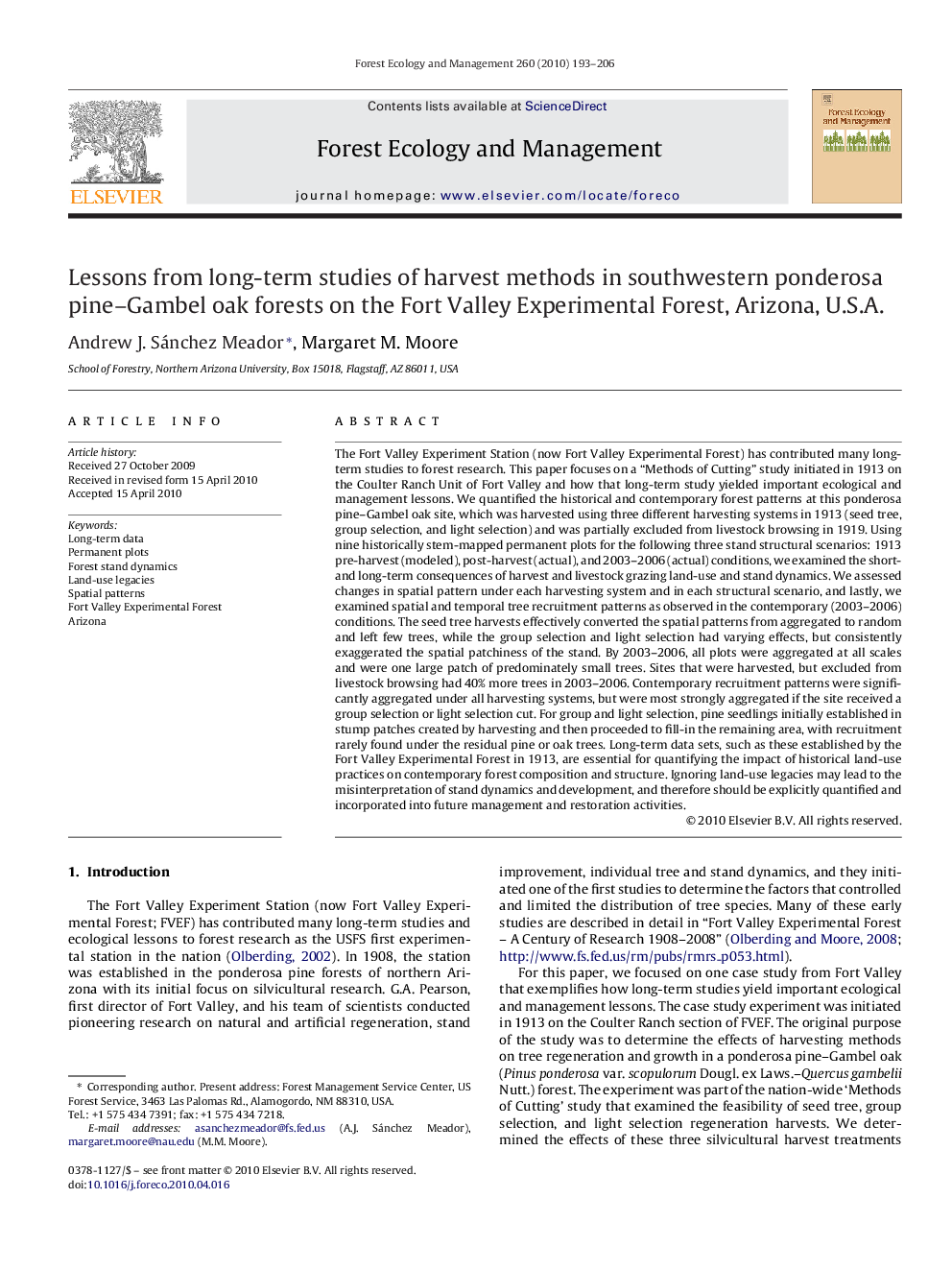| Article ID | Journal | Published Year | Pages | File Type |
|---|---|---|---|---|
| 88194 | Forest Ecology and Management | 2010 | 14 Pages |
The Fort Valley Experiment Station (now Fort Valley Experimental Forest) has contributed many long-term studies to forest research. This paper focuses on a “Methods of Cutting” study initiated in 1913 on the Coulter Ranch Unit of Fort Valley and how that long-term study yielded important ecological and management lessons. We quantified the historical and contemporary forest patterns at this ponderosa pine–Gambel oak site, which was harvested using three different harvesting systems in 1913 (seed tree, group selection, and light selection) and was partially excluded from livestock browsing in 1919. Using nine historically stem-mapped permanent plots for the following three stand structural scenarios: 1913 pre-harvest (modeled), post-harvest (actual), and 2003–2006 (actual) conditions, we examined the short- and long-term consequences of harvest and livestock grazing land-use and stand dynamics. We assessed changes in spatial pattern under each harvesting system and in each structural scenario, and lastly, we examined spatial and temporal tree recruitment patterns as observed in the contemporary (2003–2006) conditions. The seed tree harvests effectively converted the spatial patterns from aggregated to random and left few trees, while the group selection and light selection had varying effects, but consistently exaggerated the spatial patchiness of the stand. By 2003–2006, all plots were aggregated at all scales and were one large patch of predominately small trees. Sites that were harvested, but excluded from livestock browsing had 40% more trees in 2003–2006. Contemporary recruitment patterns were significantly aggregated under all harvesting systems, but were most strongly aggregated if the site received a group selection or light selection cut. For group and light selection, pine seedlings initially established in stump patches created by harvesting and then proceeded to fill-in the remaining area, with recruitment rarely found under the residual pine or oak trees. Long-term data sets, such as these established by the Fort Valley Experimental Forest in 1913, are essential for quantifying the impact of historical land-use practices on contemporary forest composition and structure. Ignoring land-use legacies may lead to the misinterpretation of stand dynamics and development, and therefore should be explicitly quantified and incorporated into future management and restoration activities.
